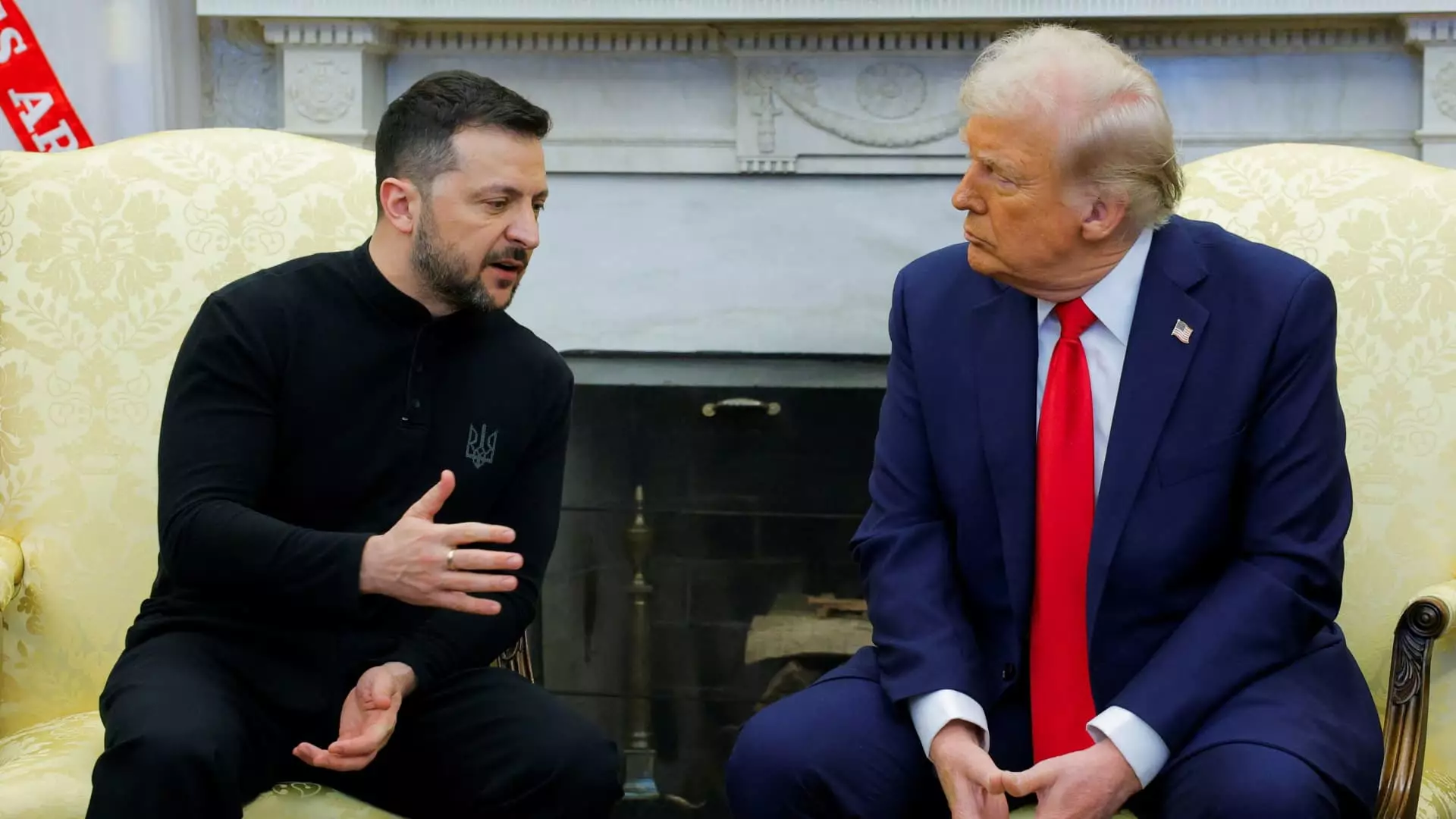In the heated arena of international politics, the convergence of leaders can often signal an impending breakthrough or a mere spectacle of diplomatic theater. Such was the case with U.S. President Donald Trump and Ukrainian President Volodymyr Zelenskyy when they met recently in Rome under the somber shadow of Pope Francis’s funeral. The occasion, laden with historical weight, should have been a hallmark of renewed hope for peace negotiations amidst the ever-present specter of war. However, upon closer examination, the optics and substance of this encounter lay bare the complexities and contradictions that continue to plague the peace process.
Trump and Zelenskyy’s meeting, described as “very productive” by a White House spokesman, raises questions about what is productive in a context where actual progress seems elusive. For a mere 15 minutes, these men exchanged words without aides or notes—a rare, almost intimate moment for two leaders entrenched in a conflict that has seen suffering on an unimaginable scale. Yet, the brevity of their conversation only underscores an unsettling reality: diplomacy is often reduced to sound bites and staged photographs rather than deep, transformative discussions.
Symbolism Over Substance
Zelenskyy characterized the meeting as historic and symbolic, but such characterizations can often mask the lack of tangible results. He spoke of “protection of lives,” a “complete and unconditional ceasefire,” and a “lasting peace” that could stave off future conflicts. Yet, these are lofty ideals in a landscape where hardline stances dominate. If anything, this meeting showcased the disconnect between the noble aspirations of peace and the grim reality of international negotiations, particularly when the stakes involve entrenched interests and territorial disputes.
The proposal that has emerged from the Trump administration—that Crimea, annexed by Russia in 2014, should be recognized as Russian territory—sparked immediate backlash from Kyiv and its European allies. Such an offer not only exemplifies a significant divergence in peace strategies but also raises ethical questions regarding a country’s sovereignty and the legitimacy of past aggressions. To many, it feels like capitulation—a price too steep for a nation already grappling with invasion and occupation. There are echoes of a tragic precedent being set, where dialogue morphs into endorsement of aggression.
Pope Francis’s Legacy and the Pursuit of Peace
The backdrop of Pope Francis’s funeral offers an ironic commentary. This pontiff, known for his plea for peace and compassion, becomes emblematic of the cries for resolution in a world drowning in conflict. Cardinal Giovanni Battista Re’s remarks about war being a painful defeat resonate profoundly when considering the present circumstances. If peace truly is the desired outcome, the current trajectories of both American and Ukrainian foreign policy appear profoundly inadequate. By framing their discussions around contentious issues such as territorial integrity, the leaders risk ignoring the very humanity that should underpin their negotiations.
Trump’s focus on rapid negotiations juxtaposes the deliberate and nuanced approach often required in conflict resolution. His administration’s insistence on a swift outcome, even amid the apparent lack of consensus, may be perceived as a political maneuver rather than a genuine diplomatic effort. In trying to drive a wedge between Ukraine and its allies, he underestimates the power of unity among nations facing existential threats.
Leadership Amidst Chaos
Both leaders find themselves in precarious positions. Trump, haunted by past criticisms and accusations of weakening alliances, requires Zelenskyy’s cooperation to present himself as a peace-broker capable of delivering results. Conversely, Zelenskyy, burdened by the dire circumstances facing his country, must navigate a relationship fraught with mistrust and historical tensions. The personal dynamics of their past encounters—that notably included jabs about respect and attire—only serve to highlight the circus-like atmosphere shadowing serious diplomatic endeavors.
Zelenskyy’s choice to continue wearing military-style attire is not merely a visual statement but a poignant reminder of the realities of war. In stark contrast, discussions engulfed in formalities can tend to overlook the emotional and human stakes inherent in these discussions. If one leader is embodying the resilience of a nation fighting for survival, the other risks appearing disconnected or entrenched in an era of political grandstanding.
In a world craving genuine solutions, comes a pressing need for leaders who are unafraid to abandon the superficial trappings of diplomacy. The future of peace between Ukraine and Russia hangs delicately in the balance, and history will not wait for leaders who fail to grasp the urgency of the moment. As the consequences of inaction loom larger, one can only hope that the echoing call for genuine dialogue will pierce through the persistent fog of political maneuvering.


Leave a Reply